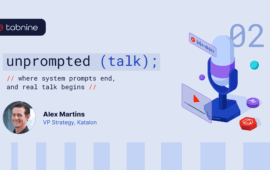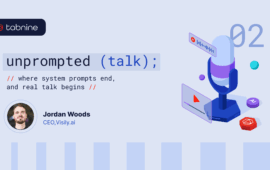Table of contents
Table of contents
The success of enterprise businesses relies heavily on the quality of their software and applications. To ensure high-quality code, comprehensive code review is essential. For enterprise businesses, the stakes are even higher, since any flaws in their code could result in significant losses.
Code review tools provide an automated way to review code for errors, bugs, and potential security risks, enabling teams to improve the quality of their code and reduce the risk of introducing bugs and other issues. However, with so many tools on the market, it can be difficult to determine which ones are best suited to the needs of an enterprise business. The right tool can handle large codebases, integrate seamlessly with your existing development workflow, and provide valuable insights and feedback to help improve the quality of your code.
This blog post discusses seven code review tools that every enterprise business should consider using.
Phabricator is widely used by some of the biggest companies in the world, including Facebook, Dropbox, and Lyft. It offers a range of features, including support for multiple languages and version control systems, the ability to comment on specific lines of code, and integration with other tools like JIRA and Slack.
With Phabricator, you can quickly and easily review code changes, manage issues, and track the progress of development projects. The main benefit of using Phabricator for code review is that it allows developers to work collaboratively on projects. Multiple developers can collaborate in real-time and view changes as they are being made, which helps improve productivity and communication. This also ensures that all developers are working towards the same goal and that any potential issues are addressed quickly.
Phabricator also includes a variety of helpful features such as automatic code formatting, syntax checking, and built-in search tools. This helps streamline the code review process and makes it easier for developers to spot potential errors and typos.
In addition to code review, Phabricator can be used to track project progress and issue management. The system is highly customizable and can be tailored to the needs of any enterprise business.
Github’s code review tools are bundled together with GitHub’s core services. Built into every pull request, the tool enables developers to submit code changes for review and collaborate with other team members on the changes. This helps ensure that code changes are thoroughly reviewed and tested, before being merged into the main codebase. GitHub’s inline commenting feature also allows developers to add comments directly to specific lines of code, making it easy to discuss and review code changes. In addition, GitHub’s code review assignment feature allows team members to assign specific code reviews to specific individuals, helping to ensure that all code changes are reviewed by the appropriate team members. Lastly, GitHub’s code review tools can be customized to fit the specific needs of an enterprise business. For example, businesses can set up code review policies and establish code review guidelines to ensure that all code changes are thoroughly reviewed and adhere to standards.
Gerrit is an open-source tool that’s built on top of Git. It offers many of the same features as Phabricator, including the ability to comment on specific lines of code, support for multiple languages and version control systems, and integration with other tools. It also has a robust plugin system that allows you to extend its functionality.
Gerrit also makes it easy for developers to collaborate on code review using a web-based interface to review code, create change requests, and merge them into the main repository. It also provides support for multiple distributed version control systems, such as Git, Subversion, and Mercurial.
One of the main advantages of using Gerrit for code review is that it helps ensure that the code meets quality standards. The system provides a way to document and track the process of code review, while also allowing developers to clearly communicate their feedback and share their findings with the whole team. This helps to make sure that all changes are properly discussed and that any potential bugs or issues are addressed before they are merged into the main codebase.
Gerrit also makes it easier to keep track of changes – all changes are kept in one place, making it easy to review and update code.
JetBrains Space is a collaboration platform that enables enterprise companies to create and customize their own integrated code review process, supporting code review in branches before merging to master, or after merging one or more commits.
JetBrains Space includes tools for real-time collaboration and communication within the workspace, making it easy for teams to work together on code review and other tasks. Teammates can also easily accept changes and track discussions between reviewers and code authors.
In addition, JetBrains Space allows businesses to customize the code review process to fit their specific needs, such as by establishing code review policies and guidelines. For example, it’s also possible to restrict direct commits via the permission scheme, or allow merge requests to be automatically accepted once certain criteria or rules have been met or a predefined flow is completed.
Review Board is another popular code review tool that’s designed to work with multiple version control systems, including Git, Mercurial, and Subversion. It offers a range of features, including the ability to comment on specific lines of code, support for code highlighting and formatting, and integration with other tools like JIRA and Slack.
Review Board is excellent for enterprise businesses, providing an easy-to-use, intuitive platform for developers to quickly and efficiently review code for quality assurance purposes.
One of the most beneficial aspects of using Review Board for enterprise businesses is its ability to quickly identify errors, bugs, and security vulnerabilities in their codebase. With a suite of sophisticated tools at their disposal, developers can quickly review source code and pinpoint issues that may otherwise take days or even weeks to uncover. This helps save time and money while helping to maintain the integrity of the business’s codebase.
Another key advantage of using Review Board is its scalability. Enterprise businesses often have large, complex codebases which can be difficult to manage. With Review Board’s scalability, businesses can easily scale up or down as their needs change. This flexibility makes it easier to ensure all code meets the highest standards of quality, even if it means making changes on the fly.
Finally, Review Board offers powerful collaboration features. By allowing developers to comment on code and collaborate on fixes in real time, businesses can ensure the highest levels of quality and accuracy in their code. This makes it easier for teams to keep up with the ever-changing landscape of modern development, ensuring all code is optimized for maximum performance.
Crucible is a code review tool developed by Atlassian, the company behind popular tools like JIRA and Confluence. It offers many of the same features as the other tools on this list, including the ability to comment on specific lines of code, support for multiple languages and version control systems, and integration with other tools. It also has a powerful search engine that allows you to easily find and review specific code changes. A range of collaboration features includes the ability to assign tasks, set deadlines, and track progress.
Crucible also integrates seamlessly with other Atlassian tools like JIRA and Confluence, as well as other popular tools like Git, Mercurial, and Subversion. This makes it easy to incorporate into your existing development workflow, without requiring any major changes.
Collaborator is a code review tool developed by SmartBear, the company behind popular tools like TestComplete and LoadComplete. It offers many of the same features as the other tools on this list, including the ability to comment on specific lines of code, support for multiple languages and version control systems, and integration with other tools. It also has a range of collaboration features, including the ability to assign tasks, set deadlines, and track progress.
Collaborator has some great benefits for enterprise businesses. It allows teams to easily review code, manage reviews, and track progress all in one place. It also allows for better collaboration between developers and stakeholders, with the ability to add comments to code from anywhere and receive notifications when there’s new activity. Plus, the team can track which changes were made and when, making it easy to follow the process of code review.
Code review is an essential part of the software development process for any enterprise business. By choosing the right tool, you can improve the quality of your code, identify potential issues, and collaborate more effectively with your team. It’s important to note that as AI evolves, more and more code reviews tools will be incorporating machine-learning technology to make code review, better, faster, and more accurate. Stay tuned for an upcoming post on this subject!
Since launching our first AI code assistant in 2018, Tabnine has pioneered generative AI for software development. Tabnine helps development teams of every size use AI to accelerate and simplify the software development process without sacrificing privacy and security. Tabnine boosts engineering velocity, code quality, and developer happiness by automating the coding workflow through AI tools customized to your team. With more than one million monthly users, Tabnine typically automates 30–50% of code creation for each developer and has generated more than 1% of the world’s code.
Unlike generic coding assistants, Tabnine is the AI that you control:
It’s private. You choose where and how to deploy Tabnine (SaaS, VPC, or on-premises) to maximize control over your intellectual property. Rest easy knowing that Tabnine never stores or shares your company’s code.
It’s personalized. Tabnine delivers an optimized experience for each development team. It’s context-aware and delivers precise and personalized recommendations for code generation, code explanations, and guidance, and for test and documentation generation.
It’s protected. Tabnine is built with enterprise-grade security and compliance at its core. It’s trained exclusively on open source code with permissive licenses, ensuring that our customers are never exposed to legal liability.
Tabnine provides accurate and personalized code completions for code snippets, whole lines, and full functions. The Tabnine in IDE Chat allows developers to communicate with a chat agent in natural language and get assistance with various coding tasks, such as:
Learn more how to use Tabnine AI to analyze, create, and improve your code across every stage of development:
Try Tabnine for free today or contact us to learn how we can help accelerate your software development.
Explore recent posts
//Explore recent posts
//
< 1 -min read

< 1 -min read

< 1 -min read
More Guides
//2 -min read
2 -min read
2 -min read
